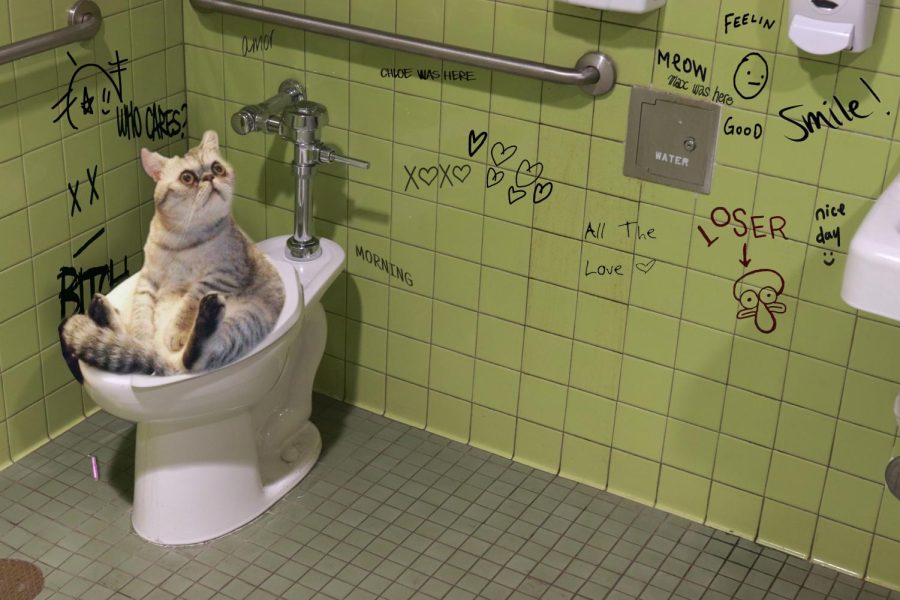The Dangers of Flushing Cat Poop Down Your Toilet - Advice for Safer Disposal
The Dangers of Flushing Cat Poop Down Your Toilet - Advice for Safer Disposal
Blog Article
What are your thoughts concerning How to Dispose of Cat Poop and Litter Without Plastic Bags?

Introduction
As feline owners, it's essential to bear in mind how we dispose of our feline close friends' waste. While it may appear convenient to purge cat poop down the bathroom, this practice can have damaging consequences for both the atmosphere and human wellness.
Alternatives to Flushing
Thankfully, there are much safer and more responsible methods to take care of pet cat poop. Consider the following alternatives:
1. Scoop and Dispose in Trash
One of the most typical method of dealing with pet cat poop is to scoop it right into a naturally degradable bag and toss it in the trash. Be sure to utilize a committed trash inside story and get rid of the waste without delay.
2. Usage Biodegradable Litter
Choose eco-friendly feline litter made from products such as corn or wheat. These trashes are eco-friendly and can be safely thrown away in the garbage.
3. Hide in the Yard
If you have a yard, think about burying feline waste in an assigned location far from veggie yards and water resources. Make sure to dig deep sufficient to avoid contamination of groundwater.
4. Set Up a Pet Waste Disposal System
Purchase a family pet waste disposal system particularly developed for cat waste. These systems make use of enzymes to break down the waste, reducing smell and ecological effect.
Health Risks
In addition to ecological issues, purging cat waste can likewise pose health and wellness risks to people. Pet cat feces may consist of Toxoplasma gondii, a bloodsucker that can cause toxoplasmosis-- a potentially extreme illness, especially for expecting females and individuals with weakened immune systems.
Environmental Impact
Flushing feline poop introduces dangerous virus and bloodsuckers right into the water, posing a significant threat to marine ecosystems. These contaminants can adversely influence aquatic life and compromise water high quality.
Conclusion
Accountable pet dog possession extends beyond offering food and shelter-- it additionally includes proper waste monitoring. By refraining from flushing pet cat poop down the toilet and choosing different disposal methods, we can lessen our ecological footprint and secure human health and wellness.
Why Can’t I Flush Cat Poop?
It Spreads a Parasite
Cats are frequently infected with a parasite called toxoplasma gondii. The parasite causes an infection called toxoplasmosis. It is usually harmless to cats. The parasite only uses cat poop as a host for its eggs. Otherwise, the cat’s immune system usually keeps the infection at low enough levels to maintain its own health. But it does not stop the develop of eggs. These eggs are tiny and surprisingly tough. They may survive for a year before they begin to grow. But that’s the problem.
Our wastewater system is not designed to deal with toxoplasmosis eggs. Instead, most eggs will flush from your toilet into sewers and wastewater management plants. After the sewage is treated for many other harmful things in it, it is typically released into local rivers, lakes, or oceans. Here, the toxoplasmosis eggs can find new hosts, including starfish, crabs, otters, and many other wildlife. For many, this is a significant risk to their health. Toxoplasmosis can also end up infecting water sources that are important for agriculture, which means our deer, pigs, and sheep can get infected too.
Is There Risk to Humans?
There can be a risk to human life from flushing cat poop down the toilet. If you do so, the parasites from your cat’s poop can end up in shellfish, game animals, or livestock. If this meat is then served raw or undercooked, the people who eat it can get sick.
In fact, according to the CDC, 40 million people in the United States are infected with toxoplasma gondii. They get it from exposure to infected seafood, or from some kind of cat poop contamination, like drinking from a stream that is contaminated or touching anything that has come into contact with cat poop. That includes just cleaning a cat litter box.
Most people who get infected with these parasites will not develop any symptoms. However, for pregnant women or for those with compromised immune systems, the parasite can cause severe health problems.
How to Handle Cat Poop
The best way to handle cat poop is actually to clean the box more often. The eggs that the parasite sheds will not become active until one to five days after the cat poops. That means that if you clean daily, you’re much less likely to come into direct contact with infectious eggs.
That said, always dispose of cat poop in the garbage and not down the toilet. Wash your hands before and after you clean the litter box, and bring the bag of poop right outside to your garbage bins.
https://trenchlesssolutionsusa.com/why-cant-i-flush-cat-poop/

I stumbled upon that blog entry about How to Dispose of Cat Poop and Litter Without Plastic Bags when doing a search on the web. Sharing is caring. Helping others is fun. I thank you for reading our article about How to Dispose of Cat Poop and Litter Without Plastic Bags.
Estimate Free Report this page